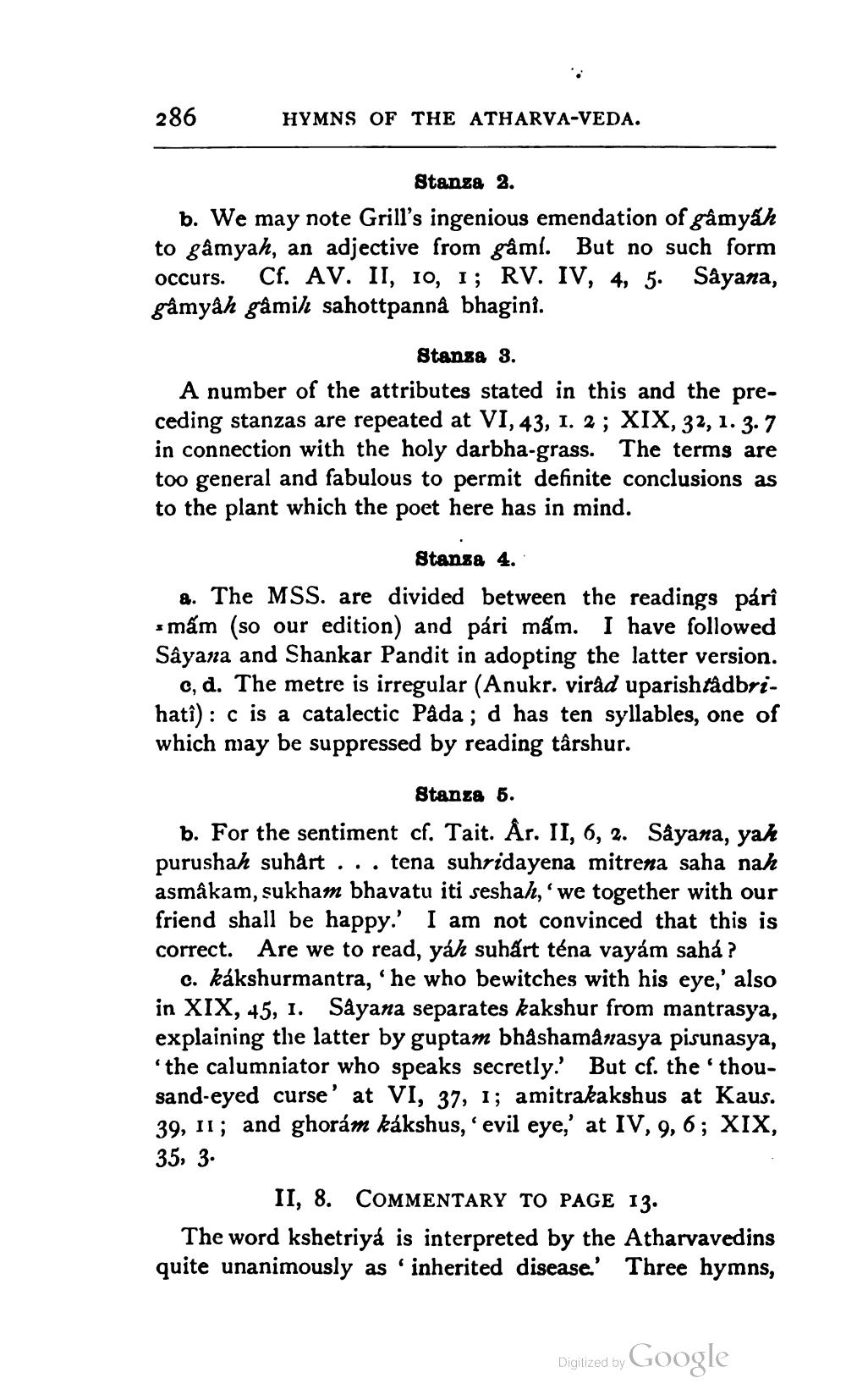________________
286
HYMNS OF THE ATHARVA-VEDA.
Stanza 2.
b. We may note Grill's ingenious emendation of gâmyah to gâmyah, an adjective from gâmí. But no such form Occurs. Cf. AV. II, 10, 1; RV. IV, 4, 5. Sâyana, gâmyâh gâmil sahottpannâ bhagini.
Stanza 3.
A number of the attributes stated in this and the preceding stanzas are repeated at VI, 43, 1. 2; XIX, 32, 1. 3. 7 in connection with the holy darbha-grass. The terms are too general and fabulous to permit definite conclusions as to the plant which the poet here has in mind.
Stanza 4.
a. The MSS. are divided between the readings párî mấm (so our edition) and pári mấm. I have followed Sâyana and Shankar Pandit in adopting the latter version.
c, d. The metre is irregular (Anukr. virâd uparishtâdbrihatî) c is a catalectic Pâda; d has ten syllables, one of which may be suppressed by reading târshur.
3
Stanza 5.
b. For the sentiment cf. Tait. Âr. II, 6, 2. Sâyana, yah purushah suhârt . . . tena suhridayena mitrena saha nah asmâkam, sukham bhavatu iti seshah, 'we together with our friend shall be happy.' I am not convinced that this is correct. Are we to read, yáh suhấrt téna vayám sahá ?
c. kákshurmantra, 'he who bewitches with his eye,' also in XIX, 45, 1. Sâyana separates kakshur from mantrasya, explaining the latter by guptam bhâshamânasya pisunasya, 'the calumniator who speaks secretly. But cf. the 'thousand-eyed curse' at VI, 37, 1; amitrakakshus at Kaus. 39, 11; and ghorám kákshus, 'evil eye,' at IV, 9, 6; XIX, 35, 3.
II, 8. COMMENTARY TO PAGE 13.
The word kshetriyá is interpreted by the Atharvavedins quite unanimously as inherited disease.' Three hymns,
Digitized by
Google




